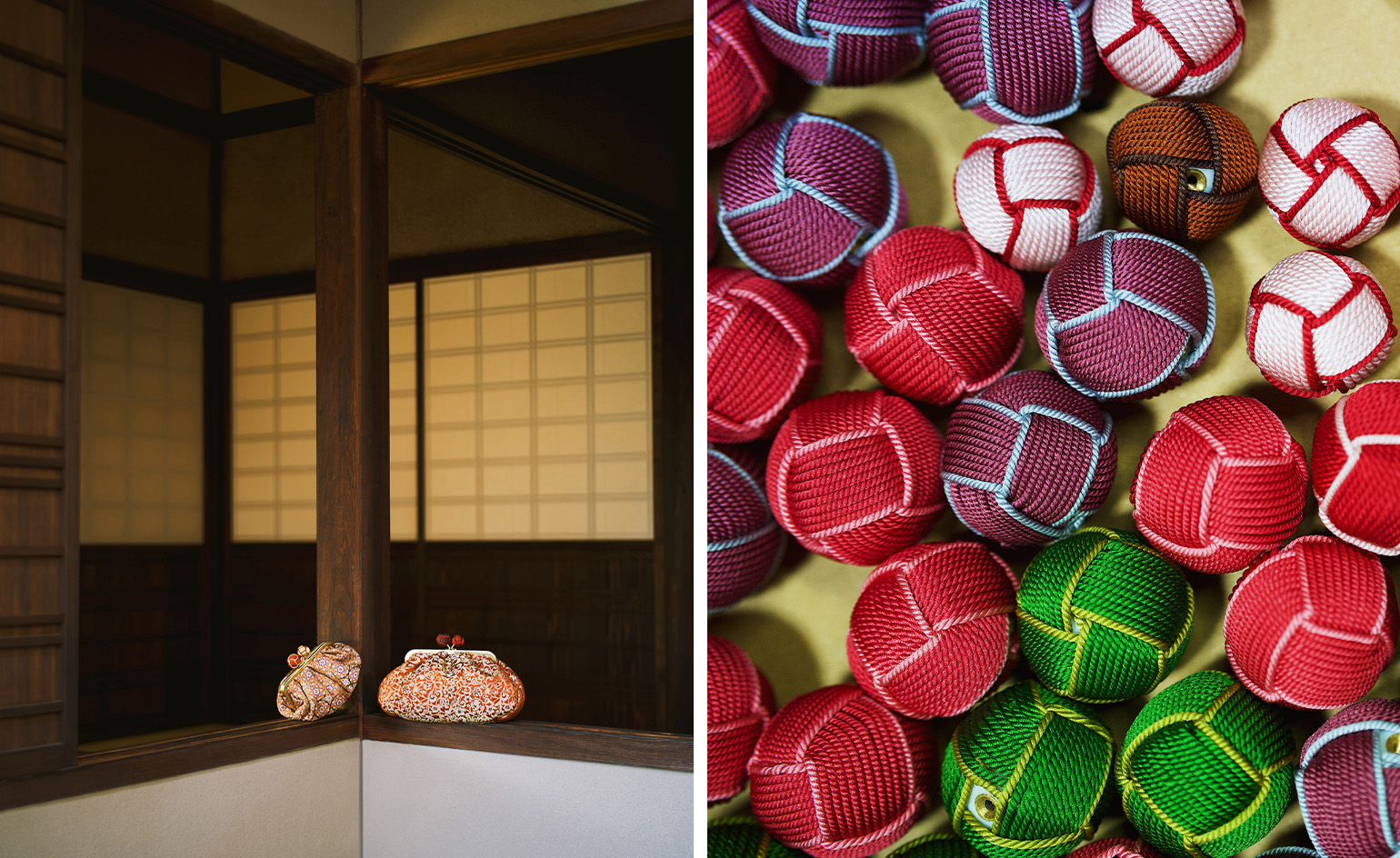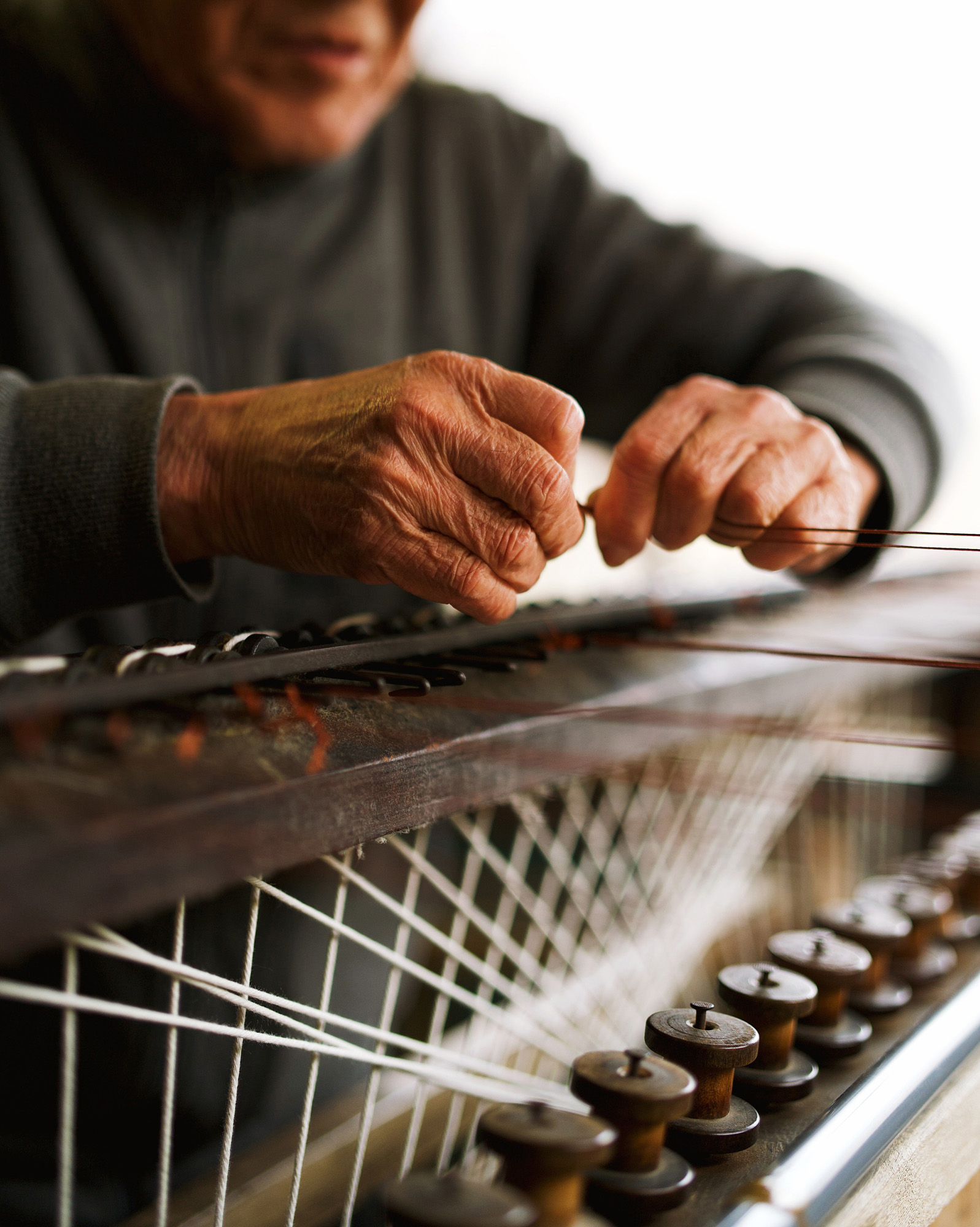
First launched in 2016, the ‘Pasticcino’ bag, by Weekend Max Mara, takes its name from the Italian word for ‘small pastry’ – its scooping design, in gathered fabric, attached with a small metal frame and ball closure, is made to be clasped in the hand as one might a cornetto on a morning commute. The style, which recalls the nostalgic glamour of clasp-fastening evening bags of the 1920s and 1930s, has been in permanent rotation ever since, reimagined in endless iterations of colour, pattern, size and material.
In 2022, the ‘Pasticcino’ embarked on a world tour, setting off from its native Milan, and travelling first to Venice. There it was reimagined in the city’s sumptuous Fortuny fabrics (which are still made in Mariano Fortuny’s century-old textile mill housed in an ancient convent on the Venetian island of Giudecca) and studded with candy-like gobstopper Murano glass clasps by Gambaro & Tagliapietra. The second stop on the tour was France, where a guipure lace exterior by Dentelles André Laude captured Paris’ synonymy with savoir-faire. Meanwhile, a faïence ceramic clasp was created by earthenware factory Manufacture des Emaux de Longwy, founded in 1789.
Weekend Max Mara’s ‘Pasticcino’ bag takes a trip to Kyoto, Japan

This month, the ‘Pasticcino’ makes the next stop on its round-the-world odyssey, landing in Kyoto, Japan, the ancient city long known for its commitment to craft – from decorative fans and glazed pottery to woodwork, kimono dyeing and stonecraft. Titled the ‘Pasticcino Bag Treasures of Japan’, this edition is crafted from the rich and evocative fabrics made by Kawashima Selkon Textiles, a company that has been creating silk jacquards for traditional Japanese formalwear and interiors since 1843. The bag comes in six variants and two sizes, each limited edition, and features different motifs from fluttering birds to blooming peonies, roses and buttercups.
Some of the designs are instilled with hidden meanings: a smattering of pink flowers represents an ancient symbol of fertility, while a reimagined design from 1905 recalls the grandeur of Kyoto’s Imperial Court. Each bag is completed with a colourful woven boule clasp made by the craftspeople of Bottega Nakamori-Kumihimo. The bottega has been creating obijime – the woven cord used to hold an obi belt in place – since 1927, in a process that takes more than 20 days of twisting, winding and dyeing. Each of the 5,000 spheres it created for Weekend Max Mara took up to an hour to complete.
According to the esteemed bottega, the intricate boules, used to open and close the bag, are a symbol of its meticulous ‘commitment to craftsmanship and tradition’, an ethos that is shared by Weekend Max Mara as it plots where the well-travelled ‘Pasticcino’ bag will be heading next on its cultural journey of discovery.
The ‘Pasticcino Bag Treasures of Japan’ is available from Weekend Max Mara’s website, in small (available maxmara.com) and medium (available maxmara.com).
A version of this article appears in the July 2024 issue of Wallpaper*, available in print on newsstands, on the Wallpaper* app on Apple iOS, and to subscribers of Apple News +. Subscribe to Wallpaper* today







